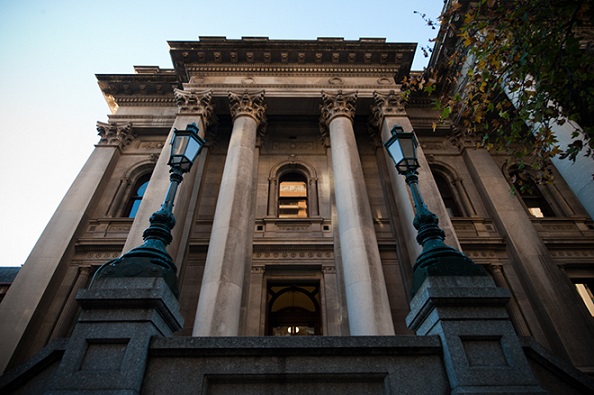An endangered green turtle has been rehabilitated and released into Sydney Harbour, fitted with a high-tech satellite tracker in a bid to understand the movements and behaviours of juvenile turtles during their ‘lost years’.
The turtle, named ‘Terry’ after being found on Terrigal Beach, is estimated to be 15 years old, which is a relatively young age for a species that can live for up to a century.
Minister for Environment James Griffin said Terry was taken to the Taronga Wildlife Hospital in August after he was found weak and injured.
“Terry came into Taronga’s care in a bad way, unable to move his head, with a shell covered in skin lesions, and a tummy full of plastic and fishing line,” Mr Griffin said.
“After four months of rehabilitation at Taronga’s Wildlife Hospital in Sydney, he was well enough for release back into the wild outside Sydney heads.
“This is significant not only because we are returning an endangered species back to its native habitat, but because Terry’s satellite tracker will help us unlock vital information about his species so we can better understand how marine turtles are using waters around NSW and beyond.
“Taronga Wildlife Hospital treats an average of 40 marine turtles every year and Terry is one of the great success stories, contributing valuable knowledge by helping us identify and protect crucial habitat for young turtles.”
Marine turtles play an important role in the environment, from maintaining productive reef ecosystems to transporting essential nutrients throughout the huge areas that they move through in their lifetime.
Marine turtles are endangered in NSW, facing threats such as boat strikes, entanglement, or ingestion of plastic and marine debris.
With less than one in 1,000 green turtles estimated to survive through to adulthood, each and every turtle rehabilitated and released through Taronga’s Wildlife Hospital is critical for survival of the species.
Terry is the 37th turtle to be released as part of Taronga Conservation Society Australia’s Turtle Tracking Program, but he’s one of just a few juvenile turtles.
Taronga Wildlife Hospital Rehabilitation Manager Libby Hall said while lots is known about adult turtles, it’s rare to be able to track and learn about turtles like Terry that are in their juvenile or ‘lost’ years.
“There is still a lot to uncover when it comes to the lives of immature marine turtles prior to when they reach maturity at between 20 and 50 years old,” Ms Hall said.
“We know mature green turtles typically come ashore to nest between November to March in more than 80 countries, but it’s important we focus on trying to understand their movements prior to reaching this age.
“The data we receive from our tracking program tells us firstly if the turtle survives post release, and also where they’re spending time, feeding, and resting.
“We can also determine the diet of the turtles prior to their stranding. This helps us map critical habitat for marine turtles, and we’re learning that immature turtles are spending a lot of time feeding on algae and seaweed in estuaries, lakes and rivers.”
Taronga’s Turtle tracking program was established in 2014 and has since tracked 37 turtles to help researchers and conservationists unlock invaluable data about the movement of a several endangered turtle species, such as hawksbill, loggerhead and green turtles.
Combined with Taronga’s research in the field of stable isotope analysis, the data collected from the turtle tracking project supports a better understanding of important habitat and its protection, threats and their impacts, and species conservation.
The data has also revealed critical information about the impacts of currents on the migratory patterns of marine turtles, which helps inform the best time and location for future releases.
For more information, visit Taronga Conservation Science, Education and Wildlife Health.







